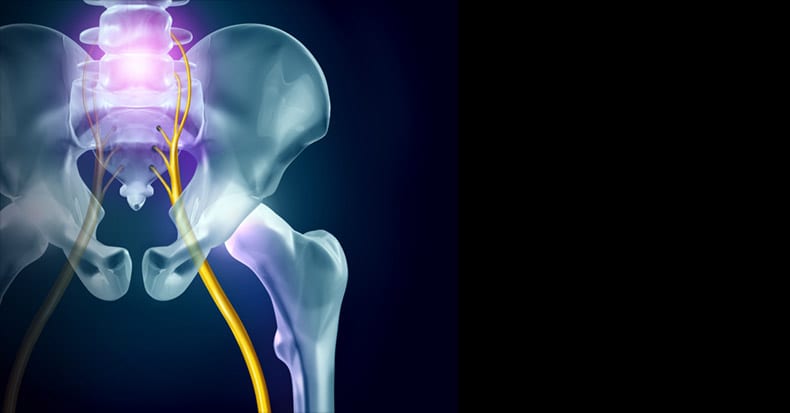The term deep gluteal syndrome (DGS) describes a condition that causes pain in the buttock that may travel down the back of the leg when the sciatic nerve is irritated. There are various structures that can result in sciatic nerve entrapment within the gluteal space which include the following: the piriformis muscle; fibrous bands containing blood vessels; the gluteal muscles; hamstring muscles, the Gemelli-obturator internus (muscle) complex, vascular (blood vessels) abnormalities; and space-occupying lesions.
Unique features within a patient’s history and physical examination can help to differentiate and define the specific site of sciatic nerve entrapment. It is common for patients with sciatic nerve entrapment to have a prior history of trauma, symptoms when sitting, and radiating pain from the low back and/or hip with tingling into the affected leg. If the nerve becomes damaged, diminished reflexes and/or muscle weakness can occur.
Because of the relationship between the lumbar spine (lower back) and the hip, it’s important to examine both regions in order to rule out a lumbar spine pathology as either the cause or a contributing factor to a patient’s symptoms. Failure to do this on a timely basis can lead to chronic pain and reduce quality-of-life based on an inaccurate diagnosis and treatment.
In one study, researchers found that a tight piriformis muscle plays a role in the majority of cases of DGS. The piriformis muscle can be stretched from a seated position. First, cross the leg, grasp the knee of the crossed leg, and pull toward the opposite shoulder (i.e., right knee toward left shoulder and vice versa). Next, arch the low back during this process and twist the trunk to the crossed knee side. Lastly, move the crossed knee in a circular manner to “work” the entire muscle. Do this for 30-60 seconds per side, multiple times a day.
The key to successful management is a prompt, accurate diagnosis followed by conservative care. While conservative treatment approaches to stretch the piriformis muscle and to reduce any pressure on the sciatic nerve are usually enough to reduce pain and improve function in patients with the condition, in some cases more invasive treatments such as injections or surgery may be necessary.

Leave Your Comment Below!